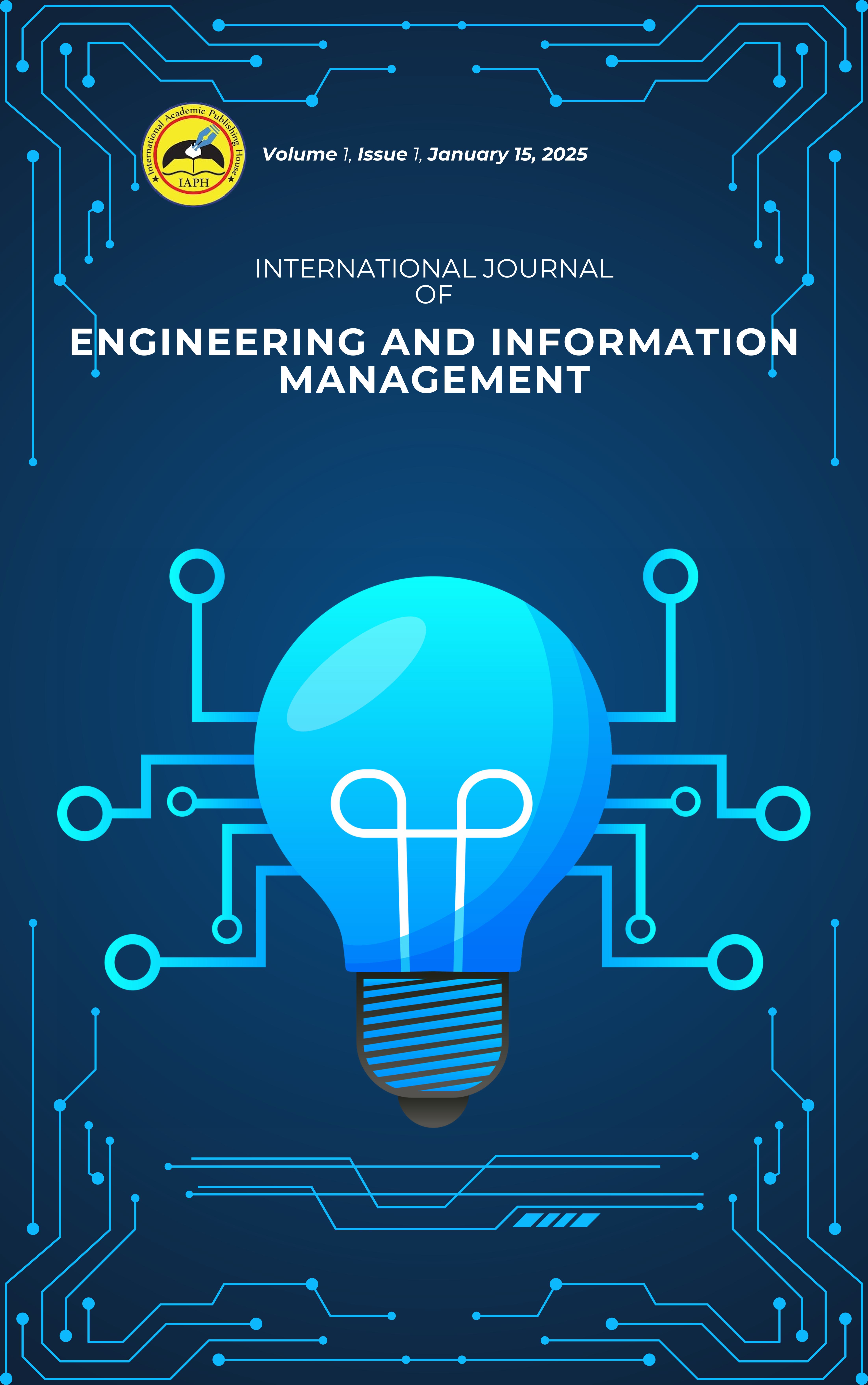Empirical Insights into AI-Augmented Leadership: A Multi-Industry Comparative Study
Keywords:
AI adoption, AI automation, AI bias, leadership development, Big data processing, Emotional intelligenceAbstract
The application of AI as one of the industry 4.0 drivers has drastically changed leadership roles in various industries. This paper gives a practical and comparative assessment of how AI has influenced Leadership within the financial, health, Manufacturing and education sectors. The study also examines how AI supports decision-making and automates leadership activities and challenges in human-centred positions. These unit evaluations critique the uses of AI in different sectors through qualitative and quantitative data collection to show that it is both an enabler and a disruptor. We discuss how this approach raises significant ethical issues, including Bias, responsibility, and privacy, that remain barriers to the expanded use of AI in Leadership. Moreover, this paper outlines the blended skills required within leaders to perform in AI-scaffolded environments, including data sense, emotional intelligence, and ethical reasoning. Reflectively, the discussion explores an element of autonomy in accomplishing AI’s functionality and leadership values, leaning on oversights and integrative approaches. Through the identified research gaps, met by real world data findings in the context of this paper, practical recommendations and implications for managing organizations interested in embracing AI while preserving critical human leadership attributes are presented. It is only after realizing and stating that AI is not at all a substitution for human leaders but a solid resource to be introduced to strengthen Leadership and handhold leaders in different fields.
Downloads
References
Abasaheb, S. A. and Subashini, R. (2023). Maneuvering of digital transformation: role of artificial intelligence in empowering leadership-an empirical overview. International Journal of Professional Business Review: Int. J. Prof. Bus. Rev., 8(5), 20. https://doi.org/10.26668/businessreview/2023.v8i5.1838.
Abraham, R. (1999). Emotional intelligence in organizations: A conceptualization. Genetic, social, and general psychology monographs, 125(2), 209.
Berman, S. J., Marshall, A., and Ikeda, K. (2020). The AI-powered organization. Harvard Business Review, 98(1), 56–67.
Brougham, D. and Haar, J. (2020). Technological disruption and employment: The influence on job insecurity and turnover intentions: A multi-country study. Technological Forecasting and Social Change, 161, 120276. https://doi.org/10.1016/j.techfore.2020.120276.
Büchter, R. B., Weise, A., and Pieper, D. (2020). Development, testing and use of data extraction forms in systematic reviews: a review of methodological guidance. BMC medical research methodology, 20, 1–14. https://doi.org/10.1186/s12874-020-01143-3.
Bughin, J., Hazan, E., Sree Ramaswamy, P., DC, W., Chu, M., et al. (2017). Artificial intelligence the next digital frontier. http://dln.jaipuria.ac.in:8080/jspui/bitstream/123456789/14268/1/MGI-artificial- intelligence-discussion-paper.pdf.
De Cremer, D. (2019). The replacement of human leadership by ai: A dream or reality? Leadership Quarterly, 30(4), 124–129.
De Jong, J. P. (2020). AI-driven leadership: Balancing efficiency with empathy. Journal of Leadership and organizational Studies, 27(2), 87–100.
Filipa, D. A., Kireeva, T., Orghian, D., Moreira, P., and Santos, S. (2024). My boss, the algorithm – AI leadership increases turnover through reduced psychological safety. SSRN Electronic Journal. https://doi.org/10.2139/ssrn.4605825.
Filipa, D. A., Kireeva, T., Orghian, D., Moreira, P., and Santos, S. (2024). My boss, the algorithm – AI leadership increases turnover through reduced psychological safety. SSRN Electronic Journal. https://doi.org/10.2139/ssrn.4605825.
Frey, C. B. and Osborne, M. A. (2017). The future of employment: How susceptible are jobs to computerisation?Technological forecasting and social change, 114, 254–280.
Harms, P. D. and Han, G. (2018). Algorithmic leadership: The future is now. Journal of Leadership Studies, 12(4). https://doi.org/10.1002/jls.21615.
Jarrahi, M. H. (2018). Artificial intelligence and the future of work: Human-ai symbiosis in organizational decision making. Business horizons, 61(4), 577–586. https://doi.org/10.1016/j.bushor.2018.03.007.
Kolbjørnsrud, V., Amico, R., and Thomas, R. J. (2016). How artificial intelligence will redefine management. Harvard business review, 2(1), 3–10.
Kumar, P., Chauhan, S., and Awasthi, L. K. (2023). Artificial intelligence in healthcare: review, ethics, trust challenges & future research directions. Engineering Applications of Artificial Intelligence, 120, 105894. https://doi.org/10.1016/j.engappai.2023.105894.
Milton, J. and Al-Busaidi, A. (2023). New role of leadership in ai era: Educational sector. In SHS Web of Conferences, volume 156, page 09005. EDP Sciences. https://doi.org/10.1051/shsconf/202315609005.
Ogbeibu, S., Chiappetta Jabbour, C. J., Burgess, J., Gaskin, J., and Renwick, D. W. (2022). Green talent management and turnover intention: the roles of leader stara competence and digital task interdependence. Journal of Intellectual Capital, 23(1), 27–55. https://doi.org/10.1108/jic-01-2021-0016.
Plastino, E. and Purdy, M. (2018). Game changing value from artificial intelligence: eight strategies. Strategy & Leadership, 46(1), 16–22. https://doi.org/10.1108/sl-11-2017-0106.
Pramanik, A., Sarkar, S., and Maiti, J. (2019). Oil spill detection using image processing technique: An occupational safety perspective of a steel plant. In Emerging Technologies in Data Mining and Information Security: Proceedings of IEMIS 2018, Volume 3, pages 247–257. Springer. https://doi.org/10.1007/978-981- 13-1501-5_21 .
Pramanik, A., Sarkar, S., and Maiti, J. (2021). A real-time video surveillance system for traffic pre-events detection. Accident Analysis & Prevention, 154(5), 106019. https://doi.org/10.1016/j.aap.2021.106019.
Spencer, D. A. (2018). Fear and hope in an age of mass automation: debating the future of work. New Technology, Work and Employment, 33(1), 1–12. https://doi.org/10.1111/ntwe.12105.
Tripathi, K. N. and Tripathi, P. (2023). Navigating organizational entropy: Strategies for enhancing employee performance. International Journal of Science and Research (IJSR), 12(11), 1075–1079. https://doi.org/10.21275/sr231029165339.
Von Krogh, G. (2018). Artificial intelligence in organizations: New opportunities for phenomenon-based theorizing. Academy of Management Discoveries, 4(4), 404–409. https://doi.org/10.5465/amd.2018.0084.
Vullinghs, J. T., De Hoogh, A. H., Den Hartog, D. N., and Boon, C. (2020). Ethical and passive leadership and their joint relationships with burnout via role clarity and role overload. Journal of business ethics, 165, 719–733. https://doi.org/10.1007/s10551-018-4084-y.
Watkins, M. D. (2018). The rise of ai in leadership: What human skills remain indispensable? Harvard Business Review, 96(7), 36–43.
Weissman, J. (2018). Amazon’s hiring algorithm shows how ai can amplify bias. The New York Times. Retrieved from https://www.nytimes.com.
Ye, P., Liu, L., and Tan, J. (2023). The influence of organisational justice and ethical leadership on employees’ innovation behaviour. European Journal of Innovation Management, 26(4), 1129–1149. https://doi.org/10.1108/ejim-08-2021-0421.
Zerfass, A., Hagelstein, J., and Tench, R. (2020). Artificial intelligence in communication management: a cross-national study on adoption and knowledge, impact, challenges and risks. Journal of Communication Management, 24(4), 377–389. https://doi.org/10.1108/jcom-10-2019-0137.
Downloads
Published
Issue
Section
License
Copyright (c) 2025 International Academic Publishing House (IAPH)

This work is licensed under a Creative Commons Attribution-NonCommercial-NoDerivatives 4.0 International License.

